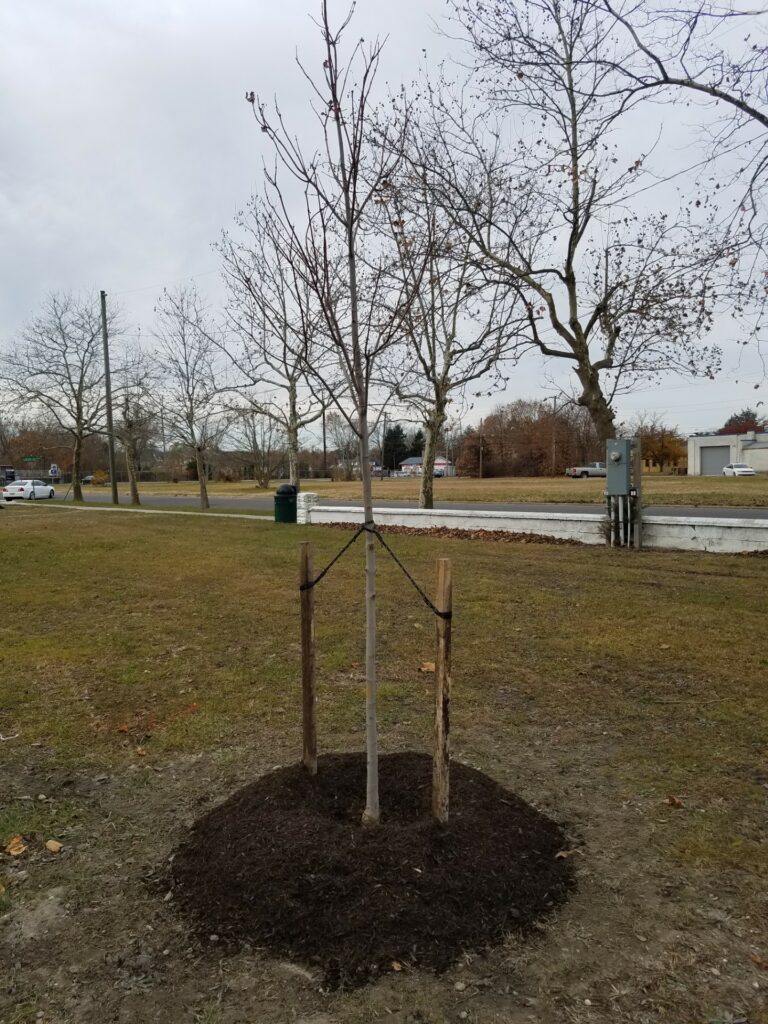URBAN FORESTRY
Case Study: Egg Harbor City 2021 Stewardship Grant
Egg Harbor City (EHC), Atlantic County
OPPORTUNITY/CHALLENGES
Egg Harbor City has faced significant challenges concerning their tree canopy. Over the past decade, 200 aged or deceased trees were removed for road reconstruction. The city saw the NJUCF 2021 Stewardship Grant as an opportunity to reduce the annual tree deficit and diversify their tree population.
PARTNERS
The project saw active participation from various local partners. SustainableEHC played a crucial role by providing educational opportunities for residents and going door-to-door in areas where trees had been removed to assess the resident’s desire for new plantings. The EHC Green Team volunteered to update the city’s tree inventory as new trees were added. Additionally, the EHC Garden Club took on the responsibility of caring for the newly planted trees in Lincoln Park, a centrally located park in Egg Harbor City. This collective effort demonstrates that it truly takes a village to raise a successful urban forest.
ACTION
In early December 2022, 68 trees were planted in various locations throughout the city. EHC effectively used their tree inventory to ensure they planted species that would add to the city’s tree diversity, such as Willow Oak, Sweetbay Magnolia, and Eastern Redbud. This was an important goal in their Community Forestry Management Plan (CFMP).
FUNDING/RESOURCES
Egg Harbor City, accredited with the NJUCF program, applied for and received $30,000 from the 2021 Stewardship Grant awarded by the DEP’s Urban & Community Forestry (NJUCF) program. The grant required a 25% match, which Egg Harbor City fulfilled with a $7,500 cash contribution, bringing the total project cost to $37,500.
RESULTS & BENEFITS
Through the 2021 Stewardship Grant, Egg Harbor City was able to reduce their annual tree deficit by adding 68 trees. This follows the planting of 61 trees with the NJUCF’s 2016 Stewardship Grant. The combined efforts of the 2016 and 2021 grants aim to address the gaps caused by construction, severe weather, and declining tree health. The additional trees also support the following goals of their Community Forestry Management Plan (CFMP): reducing the annual tree deficit, diversifying the tree population, and increasing the ecological services provided by the tree population.

Get started on similar project:
Helpful Information:
More Stories Like This: